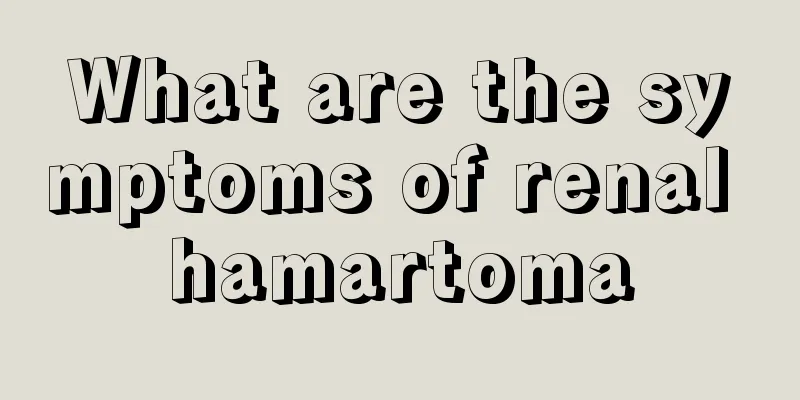What are the symptoms of renal hamartoma

|
Renal hamartoma is a common benign tumor of the kidney. Its typical symptoms include lumbar pain, hematuria and palpable masses in the abdomen, but most patients may not feel any obvious discomfort in the early stages. If the above symptoms occur or the tumor is large, you should seek medical attention for further examination in time to prevent complications. The symptoms of renal hamartoma vary depending on the size and location of the tumor. Small tumors with no obvious symptoms in the early stages are often discovered accidentally through physical examinations or imaging studies, while larger tumors may cause dull pain in the side of the waist, hematuria, or a feeling of a mass in the abdomen. In severe cases, tumor rupture may cause acute abdominal pain and severe bleeding, and such situations require emergency treatment. Some patients may also experience hypertension or local dysfunction due to compression of blood vessels or nerves by the tumor. Confirmation is usually confirmed by B-ultrasound, CT, or MRI, and differential diagnosis requires exclusion of other kidney diseases or malignancies. The symptoms of renal hamartoma vary depending on the size and location of the tumor. Small tumors with no obvious symptoms in the early stages are often discovered accidentally through physical examinations or imaging studies, while larger tumors may cause dull pain in the side of the waist, hematuria, or a feeling of a mass in the abdomen. In severe cases, tumor rupture may cause acute abdominal pain and severe bleeding, and such situations require emergency treatment. Some patients may also experience hypertension or local dysfunction due to compression of blood vessels or nerves by the tumor. Confirmation is usually confirmed by B-ultrasound, CT, or MRI, and differential diagnosis requires exclusion of other kidney diseases or malignancies. For the treatment of renal hamartoma, regular follow-up or active treatment is recommended. For tumors with a diameter less than 4 cm and no symptoms, regular B-ultrasound or CT follow-up is generally chosen; if the tumor is larger than 4 cm, symptoms appear or it grows rapidly, interventional treatments such as tumor embolization and minimally invasive surgery such as partial nephrectomy or radiofrequency ablation can be considered. Maintain good living habits, avoid trauma and strenuous activities, reduce high-salt and high-fat intake in the diet, and check regularly to ensure stable health. If abnormalities are found or symptoms worsen, go to the hospital immediately. |
<<: What is the cause of renal hamartoma
>>: Is laryngeal cancer growing on the vocal cords serious?
Recommend
What kind of tea is suitable for making with a stone scoop pot
Chinese people have a unique feeling for tea, and...
Why do I have to get up at five in the morning
Going to bed early and getting up early accounts ...
Resin lens scratch repair tutorial
Resin lenses are lenses made of resin as the main...
How to choose a hospital for hamartoma
How to choose a hospital for hamartoma? We want t...
How to use hair conditioner
No pain, no gain. If you want to be beautiful, yo...
What to do if there are bugs in the rice
Nowadays, families all like to eat rice, but rice...
Understanding the causes of colon malignancy
Colon cancer is a common malignant tumor of the c...
How to prevent banana milkshake from turning black
In spring, banana milkshake is a very good drink....
What should I do if my eyes hurt and have bloodshot eyes?
In daily life, many people are prone to eye pain ...
Indications for prostate cancer surgery and chemotherapy
Prostate cancer is extremely harmful to men. How ...
What are the causes of nasopharyngeal cancer
What are the causes of nasopharyngeal cancer? Now...
What are the causes of uterine cancer? Five things to avoid to prevent uterine cancer
Uterine cancer is a common gynecological malignan...
What is the cause of lymphoma and how to prevent it
Lymphoma patients should maintain an optimistic a...
There are bumps on the back of the neck, be careful it is acne
The most common skin disease for pimples on the b...
What's wrong with the scab in the ear
Ear scabs are a very common phenomenon. Many peop...









